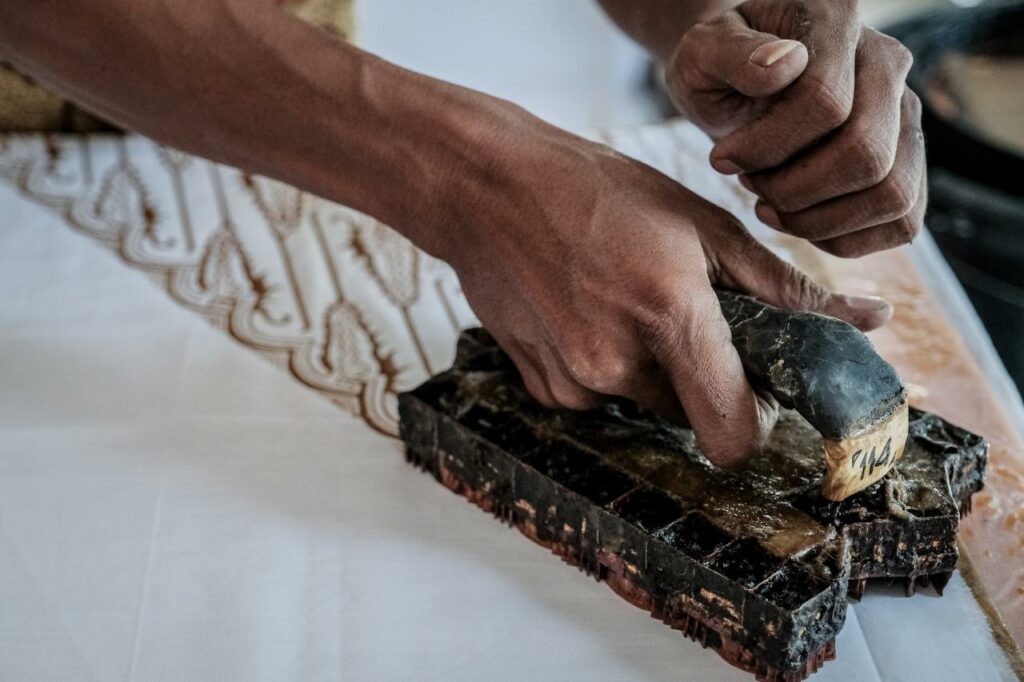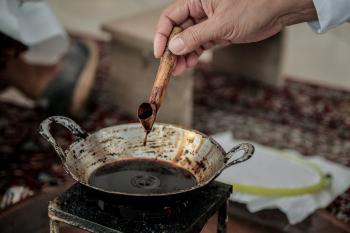Discussing the diversity of textiles typical of Indonesia, there are many types and types that are known and worldwide. One of the famous Indonesian textile products to date is woven fabric and Batik fabric.
Woven fabric is one of the textile works that has high artistic value. The beauty of this fabric and its variety of patterns make it much in demand in foreign markets, including in the United States, Japan, and the Netherlands. Generally, woven fabrics are found in various weaving villages scattered throughout Indonesia. Some woven fabrics have different and unique philosophical and meanings. Woven fabrics are usually made of wood fibers, cotton, silk, and others. Not all woven motifs are made with the ikat technique, some are woven by hand using gold and silver threads where the results of the weaving are known as Songket fabrics. Songket is a luxurious fabric that originally required a certain amount of real gold to be made into gold thread, then hand woven into a beautiful and stunning fabric. According to Indonesian tradition itself, golden songket is also often associated with the glory of the Sriwijaya Kingdom which was prosperous, rich and victorious from the 7th to the 14th centuries in Sumatra. There are many kinds and types of Songket which are grouped based on the area of manufacture, philosophy and the dominance of the colors used. Among other things, namely.
Palembang – South Sumatra where there are two weaving crafts namely Tajung and Songket fabrics, usually Palembang Songket is woven using silver and gold threads, while Tajung or Sewet Tajung Gebeng fabrics are woven with silk threads.
Minangkabau – West Sumatra, which has the name Songket Pandai Sikek, where it is made using gold thread. There are two types of Pandai Sikek weaving, namely Balapak and Bacatua. Balapak is a cloth woven by passing gold threads throughout the fabric. While Bacatua is a woven fabric consisting of warp and weft threads where in certain parts it is decorated with gold threads.
Batak – North Sumatra, the weaving is called Ulos cloth.
Lombok – West Nusa Tenggara where the Bima and Sasak regions are two weaving areas called Sasak weaving with motifs such as striped stripes, zigzag triangles, hexagon flowers and boxes.
Jepara – Central Java. Troso ikat weaving, this fabric is made from strands of weft or warp threads previously tied and dipped in natural dyes. Jepara weaving has ethnic nuanced motifs (misris, krisna, carving), traditional, classic and unique which are still maintained today.
Balinese – Indonesian. This Balinese woven fabric is known as Gringsing Weaving. This type of woven fabric from Tenganan village is unique because it uses a double ikat technique or a double ikat technique in the manufacturing process. There is also Endek woven fabric which is produced in the village of Sidemen Bali, now Endek fabric has been widely produced into modern fashion products. In fact, clothing with a touch of Endek fabric was also exhibited in the Christian Dior collection at the Paris Fashion Week fashion show in December 2020.In addition to the various types of woven fabrics above, Indonesia is also known for its textile products in the form of Batik fabric. Etymologically, the term “batik” comes from the Javanese “batik” which means connecting the dots into a certain image on a wide or wide cloth. In European literature, this batik technique was first described in the book History of Java (London, 1817) written by Sir Thomas Stamford Raffles.

Batik art in Indonesia has been known since the time of the Majapahit Kingdom and continued to grow until the next kingdom. Batik art is the art of drawing on cloth, the coloring materials used when making batik consist of native Indonesian plants made by themselves, including noni, soga, and indigo trees. Soda material is made from soda ash, while the salt is made from mud. According to the manufacturing technique, batik is classified into several types, including: Written Batik is a cloth that is decorated with batik textures and patterns by hand. Making this type of batik takes approximately 2-3 months.
Batik Cap is a cloth decorated with the texture and pattern of batik which is formed with a stamp (usually a stamp tool made of copper). The process of making this type of batik takes approximately 2-3 days.
Painting batik is the process of making batik by directly painting on white cloth. There are several batik fabrics that have been worldwide, including Keraton Batik, Kawung Batik, Sogan Batik, Seven Forms of Pekalongan Batik, and Priyangan Batik.
Batik Keraton This batik symbolizes the wisdom, charisma, and wisdom of the Javanese kings.
Batik Kawung which has a pattern that is very similar to the kawung fruit (a type of coconut called the kolang-kaling fruit). This batik motif is also interpreted as an image of a lotus flower with four blooming petals.
Sogan Batik (Solo Batik) has also become one of the world’s most popular Indonesian batiks that have existed since ancient times. Sogan batik, dominated by brown color, was used by Javanese kings, especially the Keraton and Solo Sultanate.
Batik Priyangan, This batik has a pattern of pictures of plants that are neatly and symmetrically arranged. This symmetrical arrangement of motifs makes Priyangan Batik look neat. The colors used in this batik are unobtrusive and very subtle. Now woven fabrics and batik have developed into one of Indonesia’s creative industry commodities that penetrate the global market. Contemporary woven and batik motifs can be found not only in fashion products, but also in other creative products. Although often worn in various traditional events, now textile production is also developing not only for ready-to-wear clothing products, but also for many fashion accessories such as wallets, bags, sarongs and other products using woven fabrics and batik as basic materials.






